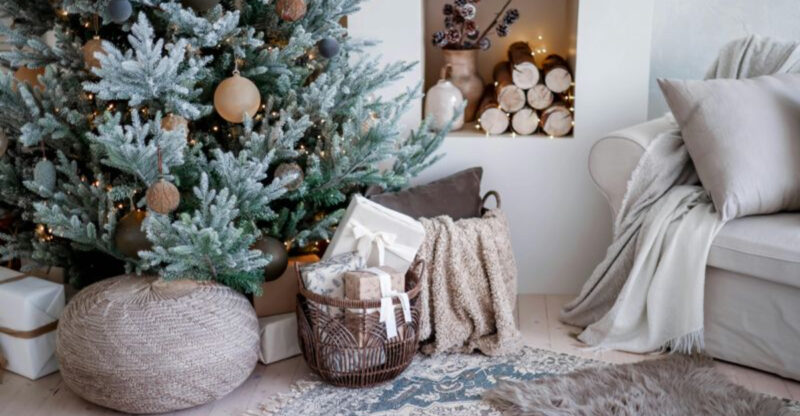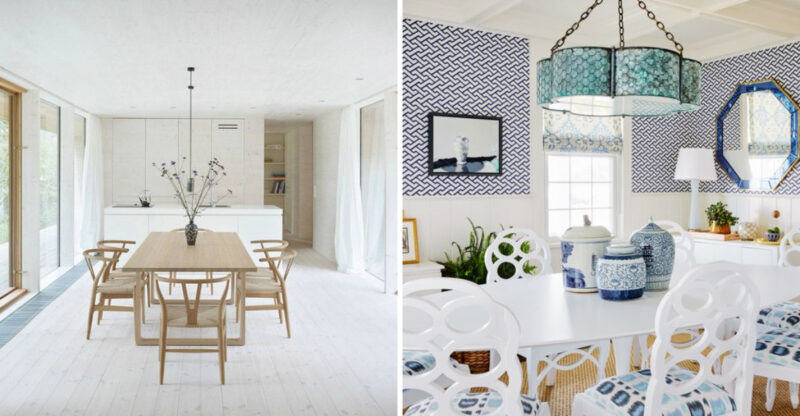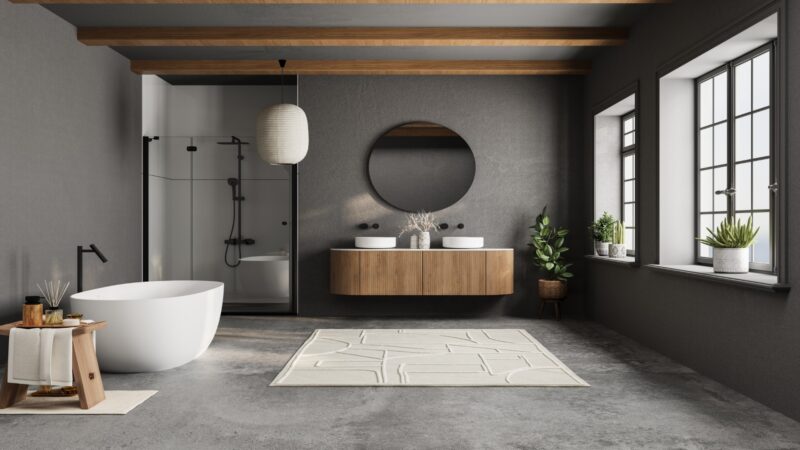Decorating Choices In Kids’ Rooms That Make Buyers Rethink Everything

Selling your home means showing it in the best possible light, and kids’ rooms often get overlooked during staging. What feels fun and personal to your family might actually turn off potential buyers who need to picture their own children living there.
When you’re preparing to list your house, understanding which decorating choices help or hurt your sale can make a real difference in how quickly you get offers and how much money you walk away with.
1. Neutral Color Palettes
Bright pink walls or electric blue ceilings might thrill your seven-year-old, but they can make buyers hesitate the moment they walk through the door. When families tour your home, they’re mentally calculating how much work it’ll take to make the space their own.
Painting over bold colors adds to their renovation list and budget concerns. Soft beige, warm gray, or classic white creates a blank canvas that lets buyers imagine any style they want.
It’s not about being boring neutral doesn’t mean lifeless. You can add pops of color through easily changeable items like pillows or artwork. This approach helps your home appeal to families with boys, girls, or multiple children sharing a room.
2. Gender-Neutral Themes
How do you design a space when you don’t know if the next family has sons, daughters, or both? Gender-neutral themes solve this problem by creating rooms that work for everyone.
Instead of princess castles or superhero headquarters, think about nature themes, adventure concepts, or geometric patterns. Colors like yellow, green, orange, and teal feel playful without screaming “boy’s room” or “girl’s room.”
This strategy broadens your buyer pool significantly. Families with different aged kids or those planning to grow their family appreciate versatile spaces. When buyers see a room that already fits their needs, they’re more likely to make competitive offers. Your staging investment pays off when multiple families can picture their children happy in that space.
3. Minimalist Designs
Are toy bins overflowing and every surface covered with collections? Clutter makes rooms feel smaller and distracts buyers from appreciating the actual space.
Minimalist design doesn’t mean your kids can’t have toys it means strategically removing excess during showings. Store most belongings in closets or move them temporarily to a storage unit. Leave just enough to suggest the room’s purpose without overwhelming the senses.
Buyers need to see the bones of the room: the size, the light, the flooring, and the layout. When themed posters cover every wall and stuffed animals pile on the bed, they can’t focus on what matters. A simplified space photographs better too, which means more online interest and showings.
4. Avoid Overly Bold Patterns
Stripes on the walls, polka dots on the curtains, and chevron on the rug can create visual chaos that exhausts anyone who enters. While patterns add personality, too many competing designs make buyers feel anxious rather than excited.
If you love patterns, limit them to one statement element per room. Maybe keep patterned curtains but paint over busy wallpaper. Perhaps leave a fun rug but swap out bedding for something solid.
This creates visual breathing room that helps buyers focus. Remember that what looks cute in a magazine spread doesn’t always translate to real-life selling situations. Buyers touring multiple homes in one day will remember your house more fondly if it felt calm and welcoming rather than visually exhausting.
5. Limit Personal Photos
It’s hard to imagine your own family in a space when someone else’s memories cover the walls. Personal photos, name signs, and customized artwork create an emotional barrier for buyers trying to picture their future in your home.
Removing these items isn’t about erasing your family’s identity it’s about marketing strategy. Buyers need to emotionally connect with the space, and that’s impossible when they’re looking at your child’s soccer trophies or birthday photos.
Replace personalized items with generic artwork, simple decorative pieces, or even leave walls mostly bare. This depersonalization applies to the whole house, but it’s especially important in kids’ rooms where personalization tends to run wild. Pack these precious items carefully for your move, and enjoy setting them up in your new home.
6. Ensure Safety and Functionality
When buyers with young children tour your home, they’re constantly assessing safety hazards. Wobbly furniture, exposed cords, or climbing temptations raise red flags that can kill a sale.
Before showings, secure all furniture to walls, cover outlets, and remove anything that looks dangerous. This attention to detail signals that your home has been well-maintained overall. Functionality matters too buyers appreciate seeing that the room actually works for daily life, not just for photos.
Show adequate storage, proper lighting, and furniture arranged in a practical way. If the bed blocks the closet or there’s no clear play space, buyers worry about livability. A safe, functional room reassures buyers that your home is move-in ready and family-friendly.
7. Neutral Bedding and Curtains
Did you know that bedding and window treatments significantly impact how buyers perceive a room’s size and brightness? Character sheets or themed curtains might delight your kids, but they narrow your buyer appeal.
Investing in neutral bedding and simple curtains for staging purposes pays dividends. White, cream, light gray, or soft blue creates a hotel-like freshness that photographs beautifully and feels universally appealing.
These items are relatively inexpensive compared to other staging costs, and you can take them to your new home afterward. Light-colored window treatments especially help by maximizing natural light, making rooms feel larger and more inviting. When buyers see a bright, fresh space, they’re more likely to overlook minor flaws elsewhere in the room or house.
8. Limit Themed Decor
Is your child obsessed with dinosaurs, unicorns, or space exploration? Themed rooms feel magical to the kids who live in them but can backfire when selling.
Buyers see a heavily themed room and immediately calculate the cost and effort to redecorate. If their child isn’t into the same theme, they’re mentally subtracting value from your asking price. Toning down themes doesn’t mean completely erasing them during showings—just reducing them to subtle hints rather than overwhelming statements.
Remove themed bedding, take down posters, and pack away collections. Leave perhaps one or two understated nods to the theme if they’re tasteful. This compromise keeps the room feeling like a kid’s space without alienating buyers whose children have different interests.
9. Avoid Overly Personalized Wall Art
Wall art featuring your child’s name, birth date, or custom illustrations creates the same problem as family photos—it prevents buyers from envisioning their own family in the space. These personalized touches are precious to you but problematic for selling.
Swap them out temporarily for neutral alternatives like simple prints, abstract art, or nature scenes. You can find inexpensive options at home goods stores or even print free designs online.
This small change makes a surprising difference in how buyers respond to the room. Instead of seeing “Emma’s Room” spelled out in wooden letters, they see a flexible space their own child could inhabit. After your home sells, you’ll have all those personalized items waiting to make your new house feel like home immediately.
10. Keep Furniture Proportional
Have you ever walked into a room and immediately felt claustrophobic? Oversized furniture in a small kids’ room creates that uncomfortable feeling for buyers.
When a full-size bed overwhelms a tiny bedroom or a massive dresser blocks natural pathways, buyers worry about the home’s overall functionality. They start questioning whether other rooms have size issues too. Before listing, honestly assess whether furniture fits the room proportionally.
Sometimes moving a piece to another room or temporarily storing it makes a dramatic difference. Buyers need to see clear walking paths and functional layouts. If they can easily imagine their child’s furniture fitting comfortably, they’re more likely to make an offer. Proper proportions make rooms feel larger and more valuable.
11. Limit Excessive Accessories
Though accessories add personality, too many knickknacks make spaces feel cluttered and harder to clean. Buyers touring your home notice every dust-collecting figurine and overloaded shelf.
They wonder if the home has adequate storage or if your family just has too much stuff. During staging, remove at least half of the accessories from kids’ rooms. Keep only a few carefully selected pieces that add interest without overwhelming.
This creates a curated look that feels intentional rather than chaotic. Buyers appreciate seeing that the room can accommodate belongings without looking messy. Clear surfaces also photograph better, which increases online interest in your listing. Remember that less truly is more when you’re trying to sell your home quickly and for top dollar.
12. Ensure Adequate Lighting
Dark rooms feel smaller, less valuable, and sometimes even depressing to potential buyers. If your child’s room has poor lighting, buyers will notice immediately and potentially offer less money.
Before showings, maximize every light source available. Open curtains fully, replace any burnt-out bulbs, and consider adding lamps if overhead lighting is insufficient. Natural light is especially valuable make sure windows are clean and unobstructed.
If privacy concerns require window coverings, choose light-filtering options rather than blackout curtains for showings. Proper lighting makes colors look better, rooms feel larger, and the entire home seem more cheerful. Buyers consistently rate well-lit homes higher than darker alternatives, even when other features are comparable.
13. Maintain Cleanliness and Order
Nothing turns off buyers faster than walking into a messy kids’ room during a showing. Unmade beds, toys scattered everywhere, and clothes on the floor send a message that the home hasn’t been cared for properly.
Buyers start wondering what other maintenance issues might be hiding. Keeping kids’ rooms show-ready requires effort, especially if you’re still living in the home. Establish a quick cleanup routine before every showing.
Make beds, clear floors, hide dirty laundry, and ensure surfaces are dust-free. If possible, have a “showing kit” ready with cleaning supplies for last-minute touch-ups. Some families even temporarily relocate kids’ belongings to storage units to maintain pristine conditions. This level of cleanliness helps buyers see your home as well-maintained and move-in ready.
14. Highlight Storage Solutions
Where will all their kids’ stuff go? This question runs through every buyer’s mind as they tour homes, especially when they peek into closets and storage areas.
If your kids’ rooms have good storage solutions, make sure buyers can see and appreciate them. Organize closets neatly, use matching bins or baskets, and remove excess items to show the full storage capacity. Built-in shelving, under-bed storage, or clever organizational systems add real value to buyers.
These features suggest the home was designed thoughtfully and can handle family life’s demands. Take photos of organized storage for your listing, as buyers specifically search for homes with adequate storage. When they see your kids’ rooms have functional storage solutions, they’re more likely to imagine their family thriving in your home.






